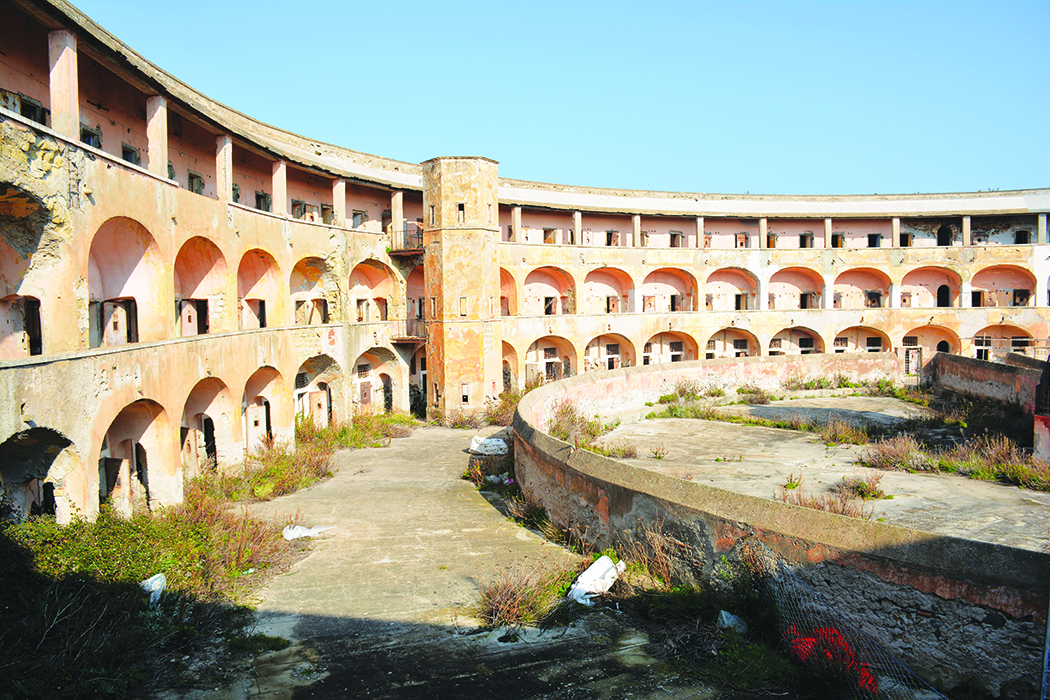With Ventotene, the island of Santo Stefano is what remains of an ancient volcano: a layer of basalt covered with pumice and lapilli from successive eruptions. It preserves Roman remains in the ‘Bath of Julia’ a swimming pool created in the tuff and connected to the sea.
The subsequent story is lost and in 1019 the island was ceded by the Dukes of Gaeta to Dominus Stefanus from which it probably takes its name. In the XIII century a monastery was built dedicated to Santo Stefano connected to Ventotene. In the 18th century the prison was built by the Bourbons.
The Life Sentence Prison of Santo Stefano
The social experiment of the Pontine Islands by the Bourbons, foresaw the transformation of Ventotene into an island for exiles and of Santo Stefano in a prison opened in 1795. For Ferdinando IV, this penitentiary had to be at the cutting edge both for philosophical approach and for ar- chitectural design.
The construction was entrusted to the architect Francesco Carpi and to the military engineer Major Antonio Winspeare who created a form of a horseshoe that recalls the San Carlo theatre in Naples with cells arran- ged like the boxes of a theatre and the stage occupied by a central command post from which all prisoners can be seen. A chapel, a small open hexagonal building, was at the centre is the courtyard.
Initially, there were 99 cells of rectangular form 4.50 x 4.20 meters, which were then divided into two parts to double the number of prisoners, distributed on three floors around the horseshoe. A narrow window allowed light to filter in and air but did not allow the prisoner to see the out- side and this lighting situation created shadow effects from the prisoner which made it even easier to control the prisoners.
Philosophically, this structure reflects the thought of a ‘panopticon’: the prisoner must always feel controlled also psychologically. This obsessive surveillance had to lead the individual to a redemption according to the eighteenth century theories of Jeremy Bentham.
The philosophy of control is summarized by a plaque of Carpi at the entrance to the prison: Donec sancta Themis scelerum tot monstra catenis victa tenet, stat res, stat tibi tuta domusas long as holy justice (the Greek goddess Themi) keeps in chains so many examples of villainy, your property is steady and your home remains protected.
Also noteworthy are the religious effects with the central chapel which is the ‘eye of God’ that controls everything and gives hope of redemption to the prisoner through repentance and rapprochement with God.
But who were the prisoners? A political section was born after the Neapolitan revolution of 1799. Perhaps the most famous prisoner is Gaetano Bresci, the anarchist who had killed Umberto I, who was probably hanged in a cell and buried in a hidden place so as not to attract visitors to his grave.
Among the famous prisoners during the fascist period we remember Umberto Terracini, Mauro Scoccimarro, Athos Lisa, Emilio Hofmaier, Rocco Pugliese and Sandro Pertini who then became President of the Italian Republic. The prison was closed for good on February 2, 1965.







Follow us